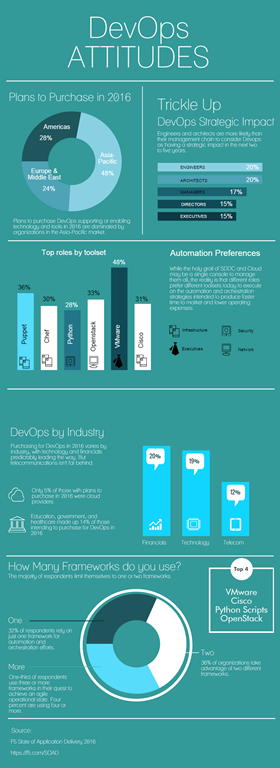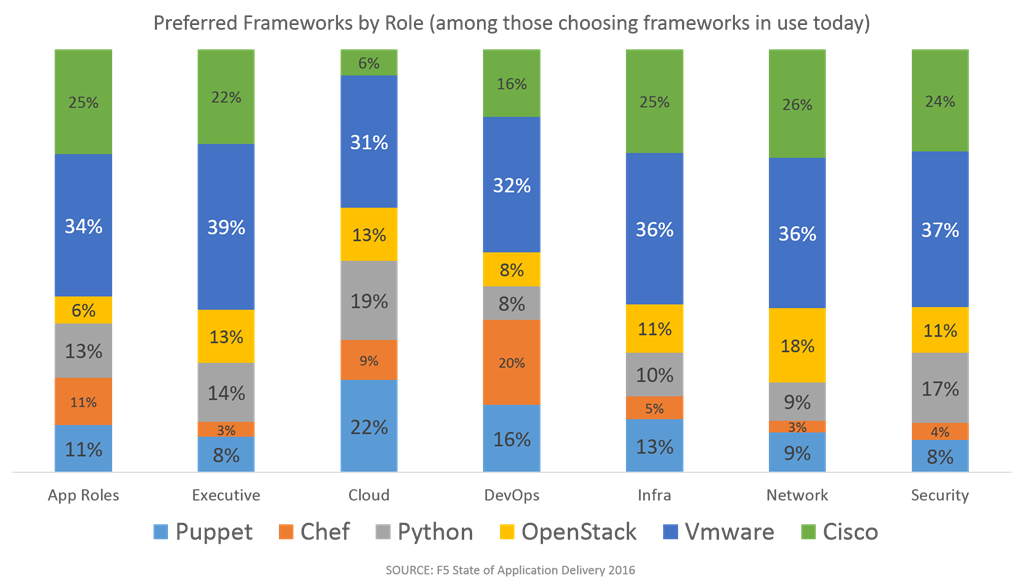State of Application Delivery 2016: In the Data Center DevOps means Diversity
One of the things I really like about our State of Application Delivery surveys is that we try to find answers to questions that no one else has answers to. I know, because I’ve looked for them. There are several very good and thorough DevOps-related surveys that dig into benefits (perceived and real), adoption rates, and metric-based improvements.
Those surveys are generally conducted by someone with not just a foot in the game, but their entire leg.
What we don’t get out of those surveys are information about just who is using what to execute on the “automation” aspects of DevOps.
So when given the opportunity (and all the data) I started crunching numbers and slicing and dicing the data to find the answers to some of those questions.

In the IT hierarchy, who thinks DevOps is strategic and who doesn’t?
If you guessed that engineers and architects are more likely than executives to label DevOps as having a strategic impact, you’d be right. 20% of engineers and 20% architects tagged DevOps as strategic while only 15% of executives and 17% of managers agreed.
Why does that matter? Because DevOps is an approach that relies as much upon automation (the “doing”) as it does cultural (the “attitude”) transformation and culture tends to trickled down, not up. Without a greater degree of executive buy in and believe in DevOps as strategic, organizations will certainly see benefits from automation but will still suffer in the long run from the same challenges arising from existing cultural impedances.

Who prefers what framework for automation and orchestration?
Though the percentage of respondents considering DevOps as strategic was low (only 17% said it was) organizations clearly understand the value of automation and orchestration. The majority (67%) use at least one automation and orchestration framework, while over half use at least two.
VMware was the clear winner, with 23% indicating usage, but Cisco, who only recently entered the market, is challenging that dominance with 16% already citing use. Python scripts (8%) beat out popular DevOps frameworks Puppet (7%) and Chef (3%). OpenStack is in use by 7% of respondents.
Does industry make a difference? Not much. The top industry using VMware and Cisco were financial services and insurance, with 20% and 21% respectively. OpenStack and Puppet’s biggest fans are technology firms (21% and 22%) while Chef gets most use from technology firms (30%). As with most nascent technology and movements, we see financials, technology, and telecommunications leading the way and consuming the bulk of use across all frameworks.
DevOps = Diversity
No matter how I sliced the data related to DevOps, I came up with diversity. Diversity of roles, across the data center. Diversity of industry, every one is using automation frameworks (and planning to make purchases related to DevOps in 2016). And diversity of use. With more than half using at least two frameworks (29% use three or four) there’s a lot of diversity in the base toolsets being used, too.
That’s good, because a robust ecosystem of DevOps tools, frameworks, and practitioners can only mean continued growth and maturity of an approach that will help optimize IT and grow the business.
You can download the 2016 State of Application Delivery at f5.com/SOAD
